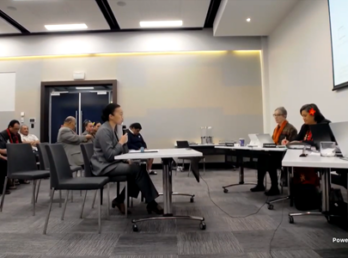Family Bach Dispute Highlights Court’s Powers to Order Alternative Dispute Resolution articles
Date
25 Nov 2025
Related Expertise
A recent High Court decision in New Zealand Gatfield v Hinton [2024] NZHC 1712 (26/6/24), provides important lessons for families navigating disputes over shared assets—particularly when traditional litigation may not deliver the outcomes parties actually seek. In this case, a disagreement over a family holiday home (bach) between sisters and a niece revealed how the Trusts Act 2019 is reshaping how courts handle trust-related disputes.
The case centered on a promise allegedly made by Anne, the sole trustee of her late parents’ estate, to transfer her interest in the bach to her sister Gillian and her niece Emma. When Anne instead sold the share to two other sisters in 2022, Gillian and Emma took legal action. Rather than proceed straight to trial, the High Court ordered the parties to mediation and arbitration—a decision that underscores a significant shift in how New Zealand courts approach family and trust disputes.
Understanding the legal landscape
The dispute
The Gatfield family bach had been built by parents Ken and Jacqui, with their right to use it represented by a share in a company. After Ken’s death in 2012, the share became part of his estate, which was to be divided equally among five daughters. When one daughter (Kay) died in 2020, her share passed to her daughter Emma.
Anne, as the sole trustee, controlled this share. Gillian and Emma claimed that Anne had promised to transfer her interest to them—a promise they allege was later broken when Anne sold to Judith and Robin instead. The dispute wasn’t simply about legal rights; it was deeply personal, touching on family relationships, a perceived betrayal of trust, and unmet expectations.
A question of jurisdiction
When Anne sought to have the case referred to mediation and arbitration under section 145 of the Trusts Act 2019, Gillian and Emma objected. They argued that the court didn’t have the power to compel ADR (Alternative Dispute Resolution) and that their concerns about trustee accountability should be resolved through formal litigation.
The High Court had to answer three key questions:
- Did this dispute fall within the scope of matters the court could refer to ADR?
- Did the application follow proper procedural rules?
- Did the Associate Judge have the authority to make such an order?
To the disappointment of Gillian and Emma, the court answered “yes” to all three questions.
What the court found
The statutory framework
The judge confirmed that section 145 of the Trusts Act 2019 gives courts broad discretion to order ADR in trust disputes, even when parties are reluctant. This isn’t a new power—courts have long had such power in certain circumstances—but the Trusts Act makes it explicit and encourages its use.
Importantly, the court clarified that applications to order ADR don’t need to follow the full procedural requirements normally required for substantive claims. This streamlined approach recognizes that determining whether a matter suits mediation doesn’t require the same level of procedural formality as determining the case itself. It also means courts can move parties toward ADR relatively quickly, without the delays that full discovery and other interlocutories would create.
Balancing competing interests
The judge weighed numerous factors when deciding whether to order mediation:
In favour of ADR:
- Confidentiality: Family disputes benefit from private resolution. Gillian and Emma sought no publicity, meaning they could focus on genuine settlement rather than public posturing.
- Flexibility: Court proceedings follow rigid rules and offer limited remedies. Gillian and Emma’s actual goal—obtaining apologies from Anne—wasn’t something a court judgment could deliver. Mediation could address underlying interests that litigation could not.
- All parties engaged: While Judith and Robin weren’t formal parties to the proceedings, they were willing to participate in mediation in good faith. This made resolution genuinely possible.
- Cost-effectiveness: Ten days of High Court litigation with associated fees (approximately $33,600) far exceeded mediation costs. Even unsuccessful mediation can narrow the issues in dispute.
- Power balance: A skilled mediator and, if needed, a senior arbitrator could manage concerns about fairness and ensure no party felt disadvantaged.
Against ADR (and why they didn’t prevail):
- Party opposition: Gillian and Emma simply didn’t want mediation. However, the judge noted that section 145 exists precisely because parties often resist ADR—if only willing parties went to mediation, the provision would be pointless. Research shows settlement rates are equivalent whether mediation is voluntary or compelled.
- Emotional tension: The sisters weren’t on good terms, and feelings ran high. But skilled mediators are trained to manage emotional dynamics, and the fact that other family members supported resolution suggested a professional process was achievable.
- Loss of court oversight: Once in arbitration, parties lose access to the High Court. However, an arbitrator has equivalent powers and jurisdiction, including the ability to award remedies a court could grant.

Why this matters for your family or business
This decision has several practical implications:
For families managing shared assets: If you’re in dispute with relatives over property, trust interests, or family assets, expect courts to seriously consider ADR. This isn’t necessarily bad news—mediation often delivers faster, more satisfying outcomes than litigation, particularly when relationships matter for future dealings.
For trust beneficiaries: Section 145 signals that courts view ADR as an appropriate tool for addressing trustee accountability. You don’t necessarily need to litigate all the way through to trial to achieve meaningful resolution or address trustee concerns.
For trustees: If you’re facing claims from beneficiaries, understand that courts may order ADR even if you’d prefer to litigate. However, mediation can often be an opportunity to clarify your position and reach genuine understanding, rather than be a threat to your interests.
For those considering litigation: Before filing, carefully consider whether your actual goals can be achieved through court proceedings. If you’re seeking relationship repair, creative solutions, or outcomes beyond monetary judgment, ADR should be part of your strategy from the beginning.
The court’s message
The judge’s decision reflects a deliberate shift in how New Zealand courts are expected to approach trust disputes. Rather than viewing the courtroom as the default forum for all disputes, courts should now actively encourage—and will compel—ADR when circumstances suggest it may resolve matters more effectively than traditional litigation.
This isn’t about preventing access to courts. Rather, it’s recognizing that not all disputes are best resolved through adversarial proceedings. Family matters, in particular, often involve interests that litigation alone cannot address: relationship repair, acknowledgment, creative compromises, and confidential resolution.
For families navigating complex disputes over assets or trusts, the lesson is clear: engage with mediation and arbitration not as alternatives to justice, but as tools that may deliver more satisfying outcomes than a judgment ever could.
When to seek legal advice
If you’re involved in a trust dispute, family property disagreement, or conflict with co-beneficiaries, discussing your situation with experienced counsel before litigation begins is essential. Understanding your options—including ADR—allows you to pursue a strategy aligned with your actual goals, not just your legal rights.
Our firm has experience guiding families and beneficiaries through trust and family disputes, including advising on when ADR is appropriate and how to maximize its effectiveness. We work to ensure our clients understand not just the legal landscape, but the practical pathways to resolution.
Subscribe
Get insights sent direct to your email.































